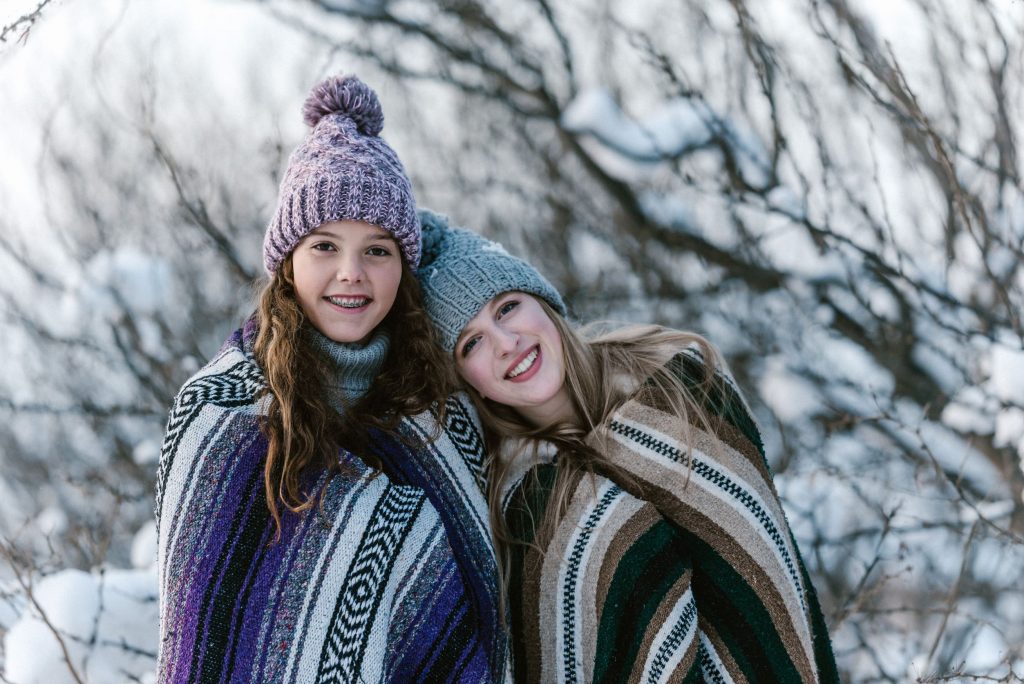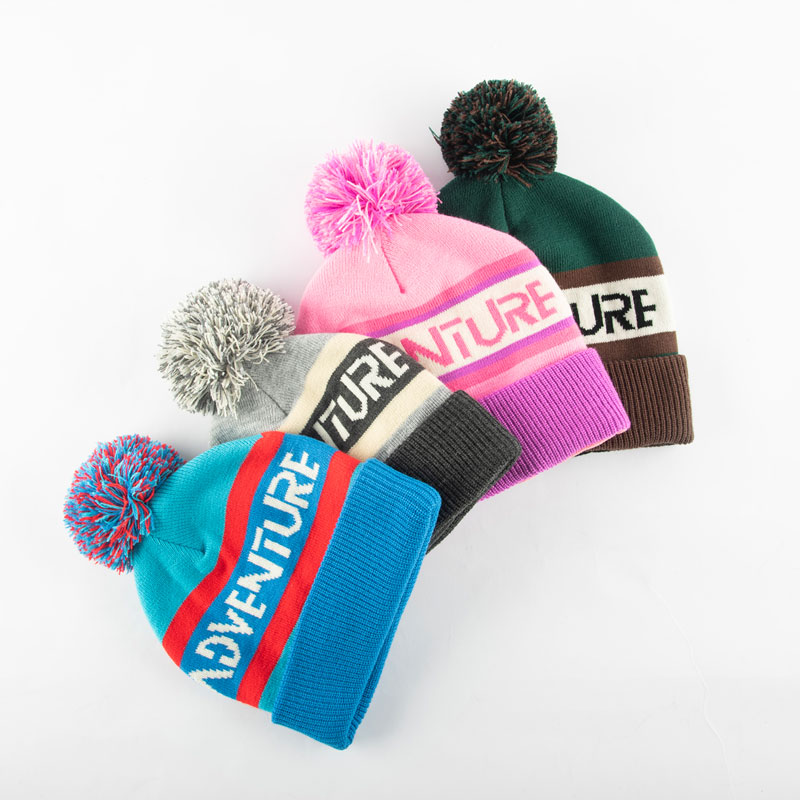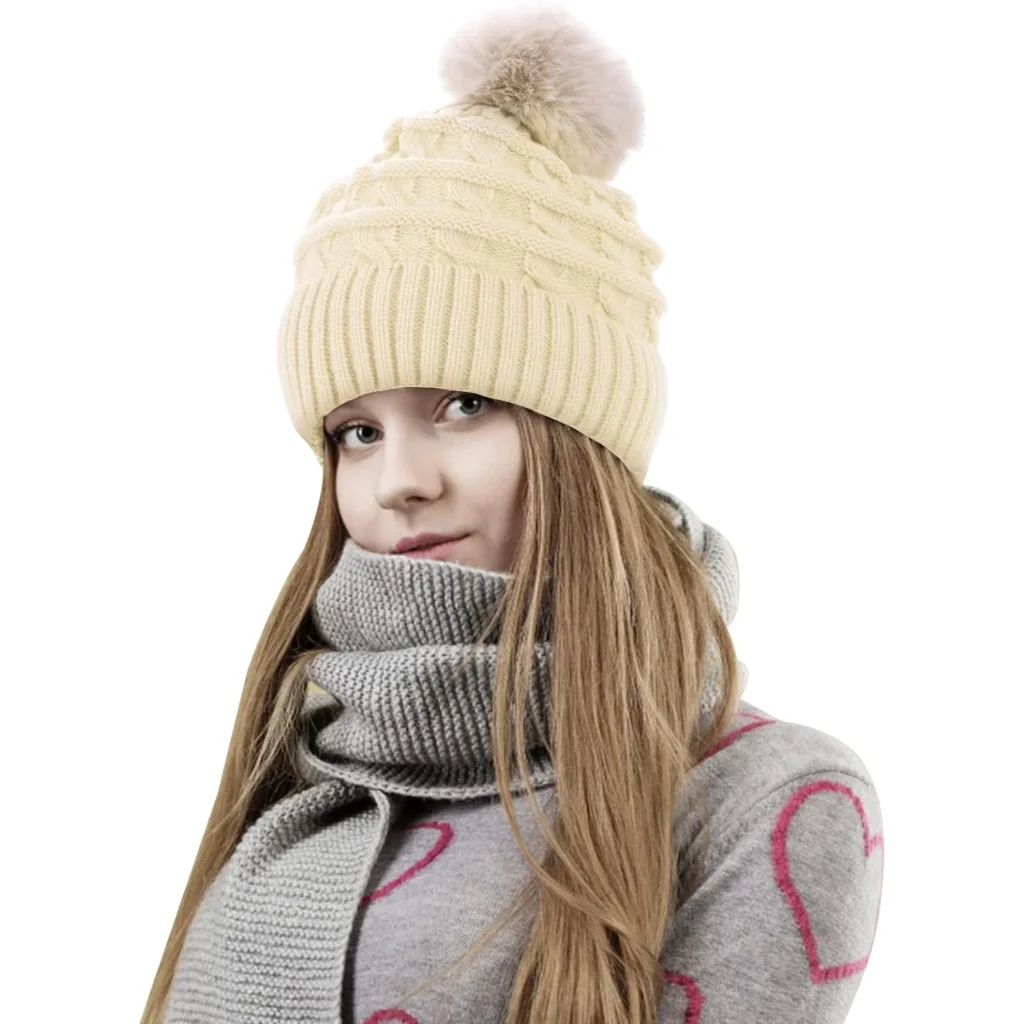The Benefits Of Wearing A Winter Hat And Precautions When Choosing A Winter Hat
Published On: September 18, 2025 By: ray herb

Hats are essential pieces of winter wear, helping people stay warm during chilly temperatures. Unfortunately, long-term exposure to wearing hats has been shown to increase hair loss risk and cause other scalp-related issues; but do we still need them? What benefits can wearing one bring us? As long as people know how to correctly wear their hats without any misconceptions , they can avoid hidden dangers of wearing one.
A good winter hat will help keep you warm in cold weather
As is widely recognized, hats provide essential warmth during winter, just as wearing warm clothing would do. Hats can also help people with sparse hair remain cozy.
Hats can help effectively keep heat loss at bay from the head. According to medical studies, people without hats on in stationary states lose 30% of their total body heat from their heads at 15 degrees Celsius, and 60% at 4 degrees Celsius.

Exposing one’s head to cold can cause cerebral vasoconstriction. Mild cases of this may lead to dizziness, headaches or disturbances in scalp blood flow and hair follicle metabolism which result in imbalanced hair nutrition or excessive hair loss; more serious cases could even lead to diseases developing.
Wearing a hat can enhance the aesthetics of an outfit and help enhance its overall design
One of the primary functions of a hat is as an accessory. Fashionable women frequently utilize this item to accessorize their daily ensembles; summer sun hats offer extra benefits as both health and beauty aids.

An elegant and fashionable hat can not only keep you warm, but can also elevate the overall beauty of your outfit. The style and color should coordinate with that of your clothing for a coordinated and beautiful look. Even messy hair that cannot be managed before leaving home in the morning can be covered up by wearing a stylish hat!
Wearing a winter hat has protective function
Air pollution and dust flying around, especially for girls in the north, hats can help you resist the erosion of sandstorms and pollutants during sandstorms and haze days. Microorganisms and dust stuck in the hair on the top of your head are like gravel on sandpaper, wreaking havoc on your scalp while increasing the friction between the comb and your hair and hair during daily combing and movements. Those microorganisms that are not visible to the naked eye may cause bacteria to grow on your scalp, and even cause hair follicle infections, directly affecting the living environment and growth quality of your hair. Friction causes the small hairs on the surface of your hair to curl up, making the hair surface rough, and in severe cases, it can even cause hair to split and break.

Furthermore, don’t forget the sun protection function of your hat, as it not only protects you from UV radiation in summer, but also ensures that the air is dry and clear in winter, and the transparency of UV rays in sunlight is not low. Therefore, you must not take the winter sun lightly.
Wearing a comfortable and fashionable hat is like putting on a beautiful and protective coat for your hair, effectively blocking the invasion of dust, microorganisms, and ultraviolet rays.
Wearing a hat in Winter can help you restrain your hair
In autumn and winter, the weather is dry, and hair is most susceptible to static electricity. Loose hair often flies around due to the raging static electricity, and hair care is often a difficult problem for many women.

In fact, it’s not that complicated. Let’s abandon those troublesome and time-consuming styling products. A small hat can obediently restrain disobedient hair on the top of the head and temples, reducing the burden of styling products on hair and taming mischievous “hair babies”.
However, it should be noted that do not press your hair too tightly and leave some room for breathability. Otherwise, the hairline and roots that are compressed by the edge of the hat for a long time can easily become loose and cause hair loss.
How To Choose A Suitable Winter Hat
Finding a hat that best complements you may not always be easy. Wool hats and caps are frequently worn during winter.
Before buying, always make sure that the material meets all necessary specifications.
Winter hats tend to be thicker than those used during other seasons, so extra care must be taken when selecting their materials.
Woolen hats come in various materials, including wool, animal hair and blends; however, pure wool is considered the ideal material. Not only does this provide excellent insulation benefits; additionally it won’t harm your head when touching.
Top and jazz hats made from wool may not provide as much warmth, but their fashionable styles and designs make them suitable for young women who follow fashion. When selecting wool hats, look for those which are slightly shiny without pilling potential.
Second, it’s essential to distinguish among styles.

The most warm winter hat is undoubtedly the trapper hat, but not everyone is suitable for it, since it is relatively large with ear protectors on both sides, and it often has requirements for face shape. Women should pay attention to whether the style and color match themselves.
The top hat styles are diverse, avant-garde and fashionable enough, and the woolen top hat has a good windproof effect. If you focus more on aesthetics rather than warmth, the top hat is a good choice for girls.
Baseball caps are generally not suitable in winter, even for relatively thick materials. If you only want them to serve as decorations, you also need to consider pairing them with scarves that provide better insulation.
Choose based on clothing
If the hat and clothing match properly, it will make you look more eye-catching and beautiful in winter.

When paired with clothing in the same color scheme or similar to the main color tone, hats can give people a fresh and elegant feeling; hats that form a strong contrast with clothing colors make people feel lively and agile; it is best to wear a darker colored hat when wearing printed clothes; and a blue or red hat is suitable when wearing red or blue clothing.
Wide brimmed hats are suitable for people with slender figures and are suitable for pairing with long clothes; baseball caps or brimless hats can make you look handsome when paired with short, lively clothes; while top hats or wool hats are often paired with suits, windbreakers, and woolen coats.
Choosing a hat should highlight its strengths and avoid its weaknesses
The choice of hat also needs to be related to the wearer’s complexion, facial shape, body shape, etc.
People with fair skin do not have any restrictions on the color of their hats, but skin that is too white can easily give people a sense of softness. Therefore, when choosing the color of a hat, it is important to avoid white or similar colors; people with dark skin should pay attention to the overall effect of their clothing when choosing brightly colored hats, and match the hat effect according to the clothing; people with rosy skin should not wear hats that are too red; people with yellowish skin should not wear hats that are too yellow or green, but should choose gray, pink, etc.

Your choice of hat depends heavily on your body type. Tall people should opt for larger than necessary hats as too-short ones will make them appear top heavy; short women should avoid flat-topped wide-brimmed styles; and tall people should avoid high-brimmed designs.
Dependent upon the size and weight of the hat
When selecting the appropriate hat, its fit should not be tight but loose; thick or heavy items must not obstruct blood circulation to the scalp, otherwise this will hinder blood flow; people with high sebum secretions should opt for lightweight and breathable hats; those prone to cold should opt for cotton or wool products; people with skin allergies must avoid synthetic materials.
